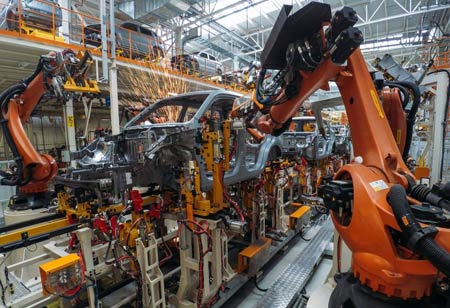Automotive robotics helps automakers to increase their global competitiveness and improve productivity.
FREMONT, CA: The automotive industry has long been a pioneer in the field of robotics. In 1959, the Unimate, the first industrial robot, was deployed in a General Motors factory. The automotive industry has been the largest purchaser of robotic automation equipment since then.
After generations of increasing industrial robot adoption, the number and types of robotic applications have significantly expanded. Automotive robots now provide several advantages to automakers in a variety of ways.
Automotive robots are some of the most innovative robotic technologies currently available. Their high level of accessibility is one of their most distinguishing and sophisticated features. Today's automotive robots gather a massive amount of production data that can be processed and analyzed for continuous optimization and reduced downtime.
Autonomous robots are also adaptable and scalable. When manufacturing facilities shift or newer robots are acquired, they can be easily reprogrammed and repurposed. They can also manage a variety of parts without reprogramming due to a collection of intelligent sensors.
Five Applications of Automotive Robots
Automotive robots are used in a variety of ways, but the following are the five most popular ones available today:
Robotic welding: Each vehicle needs a large number of welds. Much of this welding can be done by robots, which saves a lot of money in uptime and consistency.
Robotic assembly: For assembly applications like windshield installation or wheel mounting, robots provide substantially improved efficiency.
Robotic painting: The paint on a vehicle must be applied evenly over a wide area. For painting applications, the accuracy and consistency of automotive robots is a significant boost to efficiency.
Robotic material removal: The repeatability of robots is a massive benefit for enhancing efficiency in material removal while cutting and trimming plastics, die castings, or polishing molds.
Robotic machine tending: Automotive robots provide a high degree of uptime for loading and unloading CNC devices, resulting in increased performance and throughput.
Automotive robots are used in various types of applications, but the five mentioned above are the most widespread. Automotive robots support automakers in many ways, including increasing their global competitiveness and enhancing productivity.

 Copyright © 2025 AutoTech Outlook. All Rights Reserved | Privacy Policy | Subscribe | Sitemap | About us | Feedback Policy | Editorial Policy
Copyright © 2025 AutoTech Outlook. All Rights Reserved | Privacy Policy | Subscribe | Sitemap | About us | Feedback Policy | Editorial Policy